Info
Subfamily: Panicoideae
Genus etymology: Setaria = "bearing bristles" [Latin] refering to the bristles of the inflorescence
Species etymology: sphacelata = "speckled with brown or black" [Latin] refering to the fertile lemma
Photosynthetic type: C4 (warm season)
Nativity: naturalized - intentional
First recorded in Hawaiʻi: 1965
Map
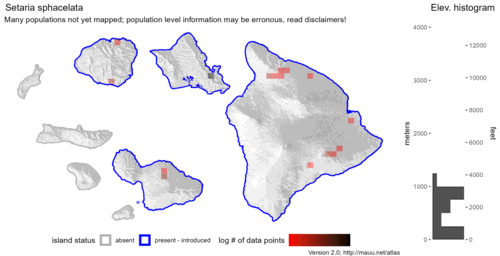
Inflorescence
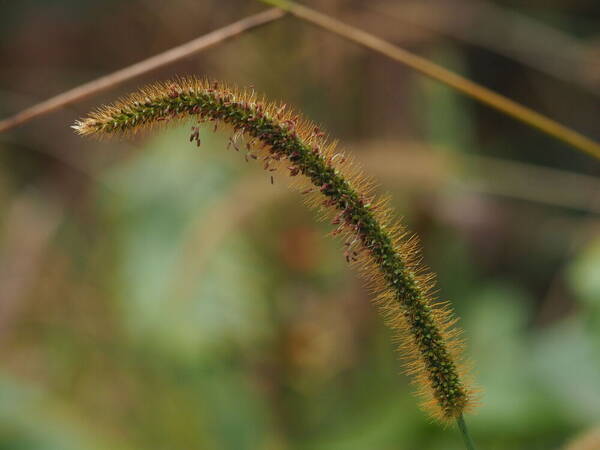
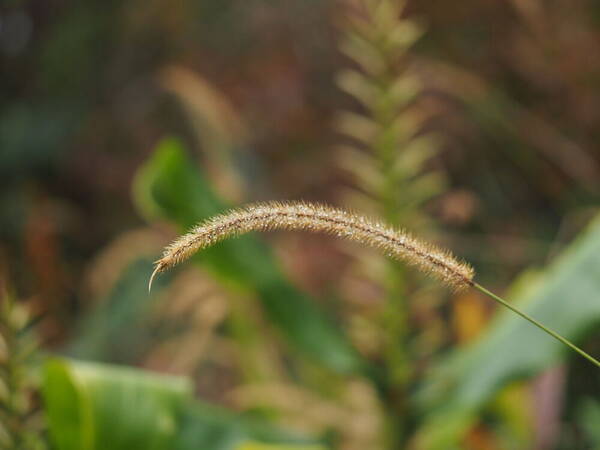
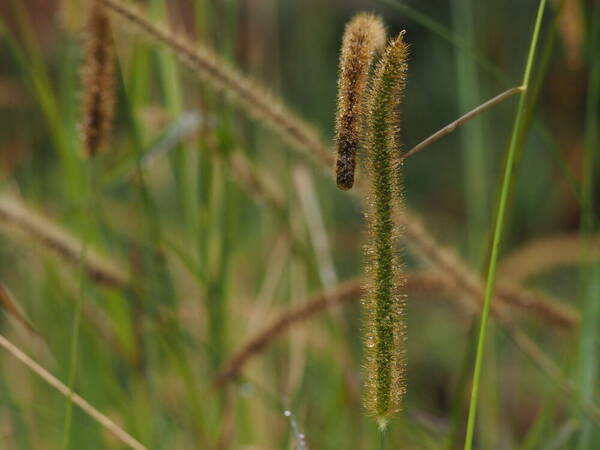
Plant
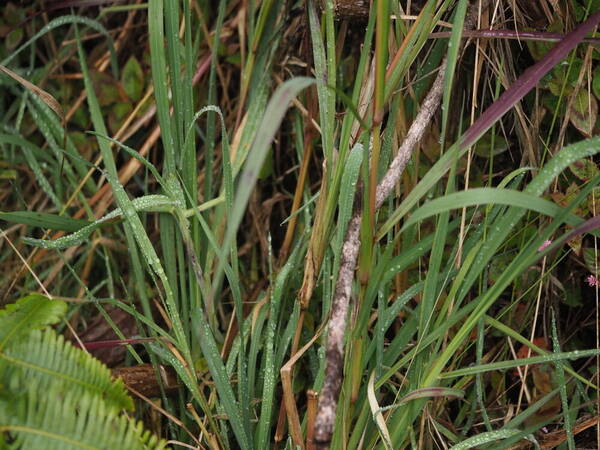
Habit
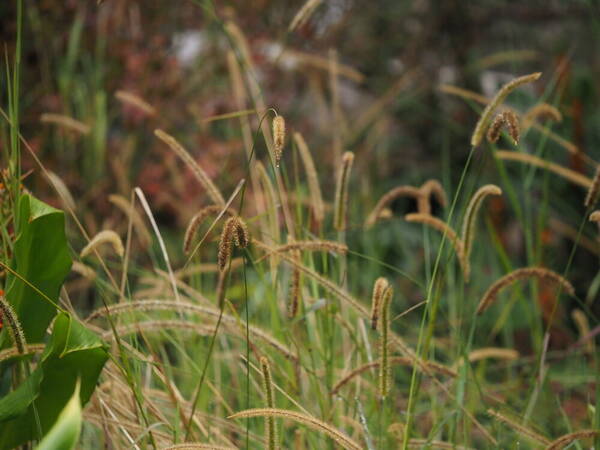
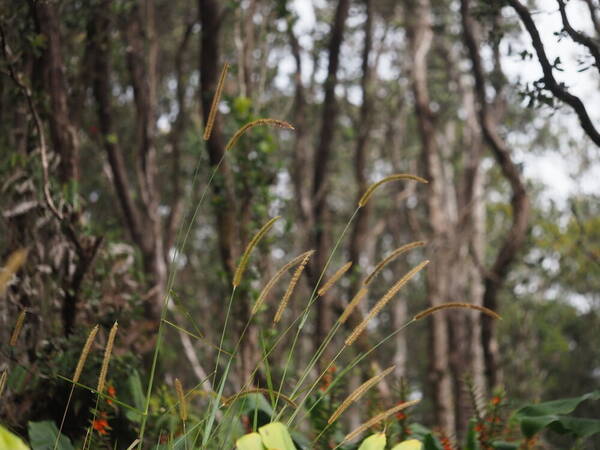
Spikelets
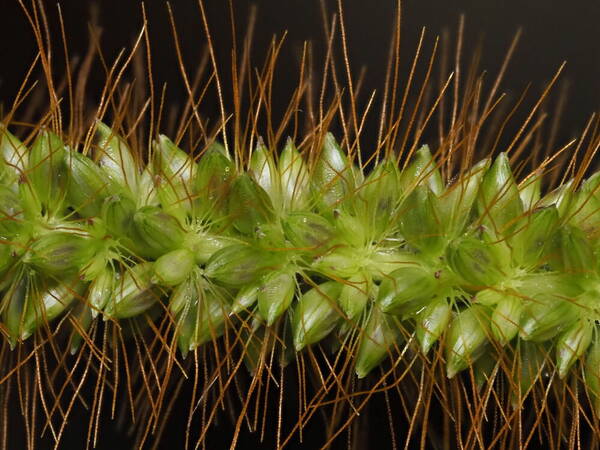

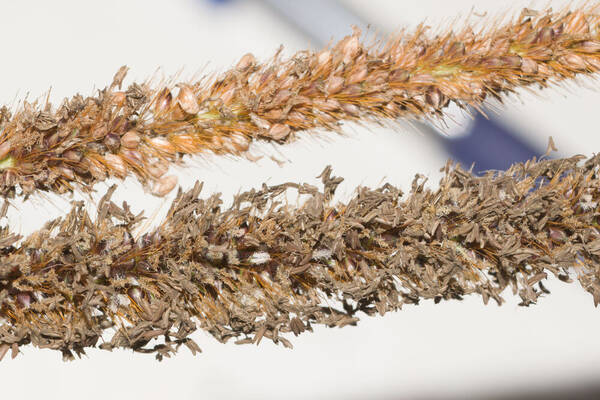
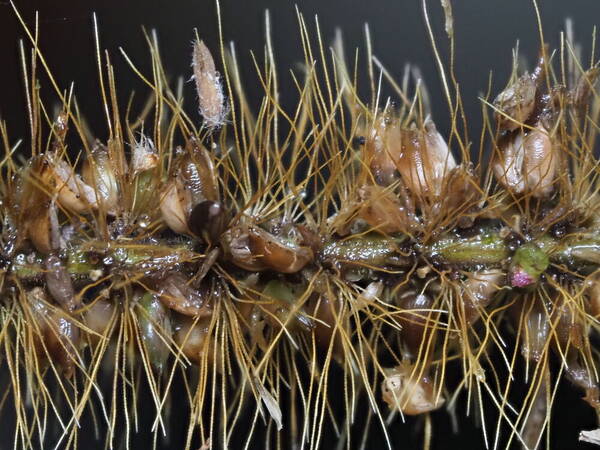
Collar
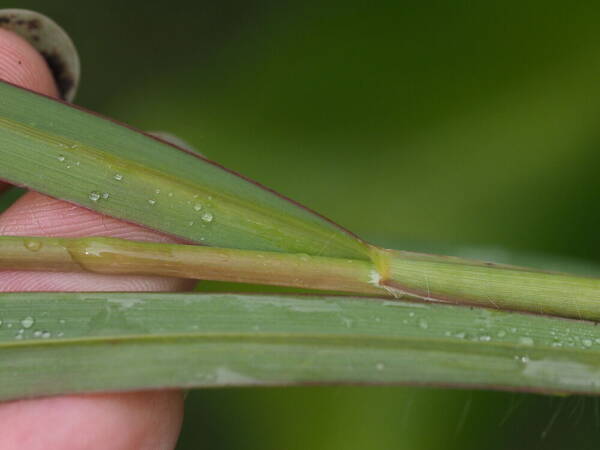
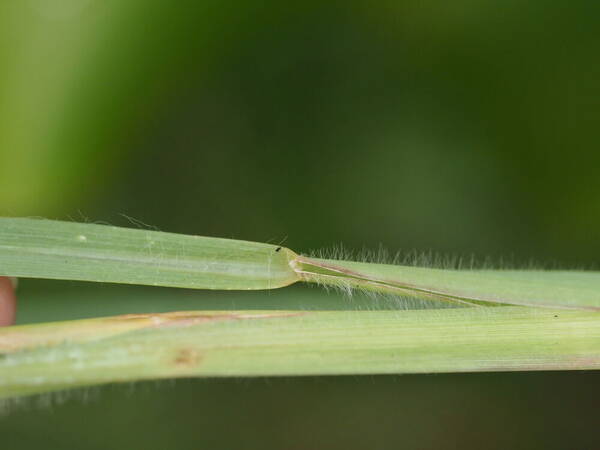
Description
Tufted perennial arising from short rhizomes, these occasionally elongated and creeping; basal sheaths often flabellate, sometimes conspicuously so; culms 20–300 cm. high, the nodes quite glabrous. Leaf-blades flat or convolute, 10–50 cm. long, 2–17 mm. wide, acuminate. Panicle spiciform, cylindrical, 3–50 cm. long, spikelets pallid to purple with fulvous bristles (except var. torta), the rhachis tomentellous; bristles 1.5–12 mm. long, 6–15 below each cluster of 1–4 spikelets. Spikelets elliptic, oblique but scarcely gibbous or laterally compressed, 1.5–3.5 mm. long; lower glume up to 1/2 as long as the spikelet, obtuse or acute; upper glume 1/3–2/3(–3/4) as long as the spikelet, (3–)5-nerved; lower floret ♂, its lemma thinly papery; upper lemma rugose, usually strongly so, but occasionally almost smooth.
(Description source: Clayton, W.D. & Renvoize, S.A. 1982. Flora of Tropical East Africa. Gramineae (Part 3). A.A. Balkema, Rotterdam. 448 pp. )
Tufted, shortly rhizomatous perennial up to 150 cm high, the nodes glabrous; basal sheaths breaking up into fibres; leaves flat or inrolled, acuminate. Panicle contracted, spike-like, cylindrical, 5–35 cm long, the bristles fulvous, the rhachis tomentellous; bristles 1.5–12 mm long. Spikelets elliptic, 1.5–3.5 mm long; lower glume up to 1/2 the length of the spikelet; upper glume 1/3–2/3(–3/4) the length of the spikelet, 3- to 5-nerved; lower floret male; upper lemma rugose.
(Description source: Cope, T.A, (1995) Flora Somalia, Vol 4. Royal Botanical Gardens, Kew, London. 312 pp. )
Tufted perennial, arising from a short rhizome. Culms 20–300 cm. high, the nodes quite glabrous. Panicle 3–50 cm. long, spiciform, cylindrical, spikelets mostly pallid to purple with fulvous bristles, the rhachis tomentellous; bristles 1.5–12 mm. long, 6–15 below each cluster of 1–4 spikelets. Spikelets 1.5–3.5 mm. long, elliptic, oblique but scarcely gibbous or laterally compressed. Inferior glume up to 1/2, the superior 1/3–2/3(3/4) length of spikelet and (3)5-nerved. Inferior floret male, its lemma thinly papery. Superior floret rugose, usually strongly so, but occasionally almost smooth.
(Description source: Launert, E. & Pope, G.V. (eds.). 1989. Flora Zambesiaca. Volume 10. Part 3. Kew, London. 152 pp. )
Plants perennial; cespitose, rhizomatous, rhizomes stout. Culms 50-150 cm, flattened; nodes glabrous. Sheaths glabrous; blades 15-50 cm long, 4-10 mm wide, flat, rather lax. Panicles 5-25 cm long, 4-8 mm thick (excluding the bristles), densely spicate; bristles 5 or more, 3-6 mm, usually orange to purple. Spikelets 2.5-3 mm, elliptic-oblong. Lower glumes about as long as the spikelets; upper florets staminate; upper glumes Vi-A as long as the spikelets; lower lemmas equaling the upper lemmas; lower paleas equaling the upper paleas, broad; upper lemmas finely and transversely rugose; upper paleas similar to the upper lemmas. 2n = 36, 54.
(Description source: Barkworth, M.E., Capels, K.M., Long, S. & Piep, M.B. (eds.) 2003. Flora of North America, north of Mexico. Volume 25. Magnoliophyta: Commelinidae (in part): Poaceae, Part 2. Oxford University Press, New York. 783 pp http://floranorthamerica.org/Setaria_sphacelata )